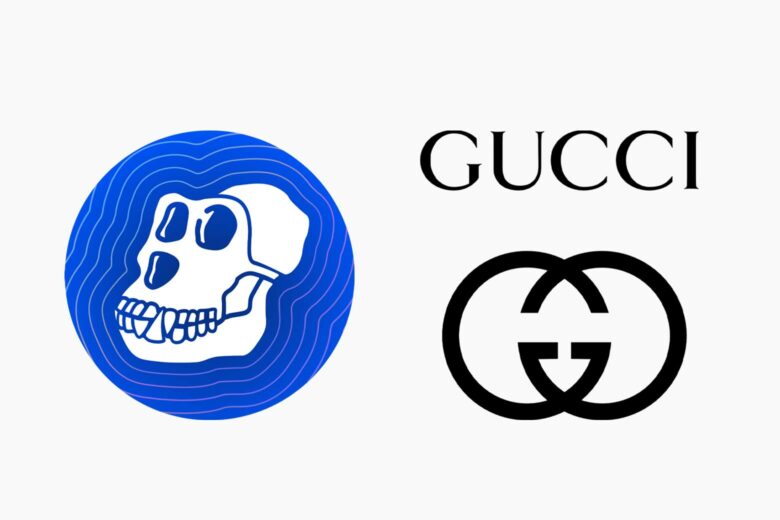Ever wondered what blockchain means and how it can be used to drive more sales and customer loyalty? This article is part of a mini-series looking at the application of blockchain technologies for the luxury industry. You’ll first discover the definition of blockchain before seeing some concrete examples of how the idea can be leveraged for your brand.
Check our definitions of blockchain and NFTs to learn more about these concepts.
Blockchain definition: The meaning of blockchain
Blockchain is a decentralized and distributed digital ledger technology that allows multiple parties to record, verify, and maintain a permanent and tamper-resistant record of transactions. It is the underlying technology behind cryptocurrencies like Bitcoin, but its applications extend beyond digital currencies.
At its core, a blockchain is a chain of blocks, where each block contains a list of transactions. These transactions are grouped together and added to the chain in a linear and chronological order. Each block is linked to the previous one through a cryptographic hash, creating an unbroken chain of blocks.
Blockchain achieves security and immutability through the use of cryptographic techniques. Once a block is added to the chain, it becomes extremely difficult to alter or manipulate the data within it without being detected. This makes blockchain a trustworthy and reliable system for recording transactions and other types of digital information.
Key characteristics of blockchain technology
One of the key features of blockchain is its decentralized nature. Instead of relying on a central authority or intermediary, blockchain networks are maintained by a network of participants, often referred to as nodes. These nodes work together to validate and verify transactions, ensuring consensus on the state of the blockchain.This makes it:
- Tamper-proof: Information on the blockchain is tamper-proof due to its cryptographic hash functions, decentralized consensus, immutability, and distributed copies, all of which make it extremely difficult and economically infeasible to alter or manipulate data within the blockchain.
- Transparent: Blockchains promote transparency by providing a decentralized and immutable ledger where all participants have access to the same information, ensuring visibility, accountability, and trust in transactions and data exchange.
- Traceable: Each transaction recorded on the blockchain is linked to previous transactions, forming a chain of information. This chain allows for easy tracing of the origin, movement, and history of assets, products, or information. Participants in a blockchain network can verify and track the provenance, ownership, and journey of items, enhancing accountability and reducing fraud or counterfeiting risks.
- Tradeable: Tradability is enhanced through the tokenization of non-fungible assets, allowing customers to securely hold, purchase, exchange, and trade these assets anytime and anywhere they choose.
Most popular blockchains
Bitcoin
As the first example of blockchain technology in action, Bitcoin is the most popular and most well-known decentralized ledger. In short, Bitcoin is a decentralized digital currency that operates on a peer-to-peer network, enabling secure and transparent transactions without the need for intermediaries, controlled by a limited supply and cryptographic technology.
Ethereum
Ethereum is the largest ecosystem in blockchain and cryptocurrency. It is an open-source platform that enables the creation and execution of smart contracts. It supports the development of decentralized applications (DApps) and allows for the issuance of programmable digital assets known as tokens.
Solana
If you’re in the payments game, you may already be familiar with Solana. Solana’s architecture focuses on high throughput and low latency, providing fast and low-cost transactions through its unique consensus mechanism.
Avalanche
Avalanche is another popular blockchain, prioritized for its use of smart contracts and low transaction fees. It aims to address the scalability and throughput limitations of existing blockchain networks by utilizing a unique consensus protocol called Avalanche consensus.
IBM blockchain
IBM provides tools and services for building and deploying blockchain-based solutions. It offers a range of features that make it one of the simplest blockchains to work with, including pre-built templates and various blockchain protocols and can be tailored to specific business requirements

How does blockchain work?
Blockchain operates on a distributed network of computers called nodes. Each node maintains a copy of the entire blockchain, which is a ledger of transactions. Transactions are grouped into blocks, with each block containing a unique identifier called a cryptographic hash generated based on the block’s data. To validate and add a new block, a consensus mechanism is used, where nodes in the network agree on the block’s validity. Blocks are linked to the previous block through hashes, forming an unbroken chain.
Blockchain ensures security through cryptography, with hash functions and digital signatures verifying data integrity. The goal of blockchain is to allow digital information to be recorded and distributed, but not edited. Transparency is achieved by all participants having access to the same information, while privacy can be maintained through encryption techniques.
Blockchain vs cryptocurrency
Blockchain and cryptocurrency are related but distinct concepts.
Blockchain is a technology, a decentralized and distributed digital ledger that records and verifies transactions or any other form of digital information. It provides a transparent, tamper-resistant, and secure system for storing and sharing data across a network of computers. Blockchain has numerous applications beyond cryptocurrencies, including supply chain management, healthcare, voting systems, and more.
Cryptocurrency, on the other hand, is a digital or virtual form of currency that utilizes cryptographic techniques to secure transactions and control the creation of new units. Cryptocurrencies are typically built on blockchain technology, using the blockchain as a decentralized ledger to record and validate transactions. Examples of cryptocurrencies include Bitcoin, Ethereum, and Litecoin.
While cryptocurrencies rely on blockchain technology as their underlying infrastructure, blockchain itself is a broader concept that encompasses various use cases beyond currencies. Blockchain enables the secure and transparent exchange of digital assets, while cryptocurrencies are specifically designed to serve as mediums of exchange, stores of value, or units of account within a blockchain-based ecosystem.
Blockchain use cases for luxury brands
Digital twins
Luxury brands can use blockchain technology to create digital twins of their products. Digital twins provide a virtual representation of a product, allowing customers to visualize and explore it in a highly detailed and interactive manner. This immersive experience helps customers understand the features, design, and unique qualities of the product more effectively than traditional marketing methods.
Digital twins engage customers on a deeper level by offering personalized and interactive experiences. Customers can interact with the digital twin, explore different angles, zoom in on details, and even customize certain aspects. This interactive engagement creates a memorable and enjoyable experience that can lead to increased brand awareness, customer satisfaction, and brand loyalty.
Traceability of raw materials and products throughout the lifecycle
Blockchain enables traceability throughout the supply chain. This provides an additional layer of authenticity and transparency. Customers can verify the product’s information, including its origin, specifications, and provenance, which builds trust and confidence in the brand. By demonstrating a commitment to transparency and authenticity, luxury brands can differentiate themselves in the market and attract customers who value trust and credibility.
Luxury brands can use blockchain technology to assure customers of ethical practices and responsible sourcing, fostering trust and meeting the growing demand for sustainable products. They can also use blockchain technology to establish authenticity and combat counterfeiting, allowing customers to verify the origin and legitimacy of luxury goods.
Loyalty programs
Luxury brands can utilize blockchain technology for loyalty programs in several ways. They can create tokenized rewards on a blockchain, ensuring transparency and security. And they can harness the immutability of transaction histories on the blockchain to enable customers to track their rewards.
Luxury brands can also use blockchain technology to facilitate the transferability of loyalty tokens across brands, offering customers more redemption options. Additionally, gamification elements can be incorporated into blockchain-powered loyalty programs to enhance engagement. Exclusive digital collectibles can be offered as unique rewards. And partnerships and ecosystems can be formed on the blockchain to expand loyalty program benefits.
Finally, blockchain-based loyalty programs provide valuable customer insights, enabling personalized offers and continuous improvement.

Should luxury brands use blockchain technology?
Benefits
Support of sustainable practices
Blockchain technology supports sustainable practices through supply chain transparency, carbon footprint tracking, renewable energy trading, waste management improvements, decentralized energy grids, and conservation initiatives. It enhances accountability, efficiency, and trust in environmental and ethical initiatives across industries.
Redefinition of customer experience
Blockchain enhances the customer experience through transparency, personalized data management, efficient transactions, supply chain visibility, product authentication, loyalty programs, and streamlined customer support. It enables seamless interactions, and provides secure and personalized experiences for customers.
Brand authenticity
Blockchain technology promotes brand authenticity by providing immutable proof of authenticity, combating counterfeits, ensuring supply chain transparency, enabling brand differentiation, and maintaining control over the secondary market.
Enhancement of consumer trust
Blockchain technology enhances consumer trust through transparency, traceability, data security, and immutability. It allows consumers to verify the authenticity and history of products, ensuring transparency and reducing the risk of fraud.
The decentralized consensus mechanisms and smart contracts build trust in the reliability and fairness of transactions. Blockchain’s cryptographic techniques secure data and protect privacy, empowering users with control over their personal information. And the technology’s decentralized nature eliminates the need for a central authority, providing consumers with increased control and removing concerns about centralized manipulation.
Reduced costs and settlement time
Blockchain technology reduces costs and settlement time by eliminating intermediaries, automating processes, improving efficiency, enhancing security, facilitating cross-border transactions, and providing real-time data transparency.
Peer-to-peer transactions eliminate fees associated with intermediaries, while smart contracts streamline processes and reduce administrative costs. Decentralized and distributed consensus mechanisms allow for faster transaction verification and settlement times. Enhanced security minimizes the risk of fraud and costly errors. The technology’s borderless nature simplifies cross-border transactions, eliminating intermediaries and associated delays. And real-time data transparency reduces the need for reconciliations and manual verifications. These combined factors result in significant cost savings and faster settlement times across industries.
Risks
Improper management
Improper management of blockchain technology can lead to security vulnerabilities, regulatory compliance issues, governance challenges, smart contract risks, scalability limitations, interoperability hurdles, and adoption barriers. Effective governance, security measures, compliance frameworks, and education are vital to mitigate these risks and ensure successful blockchain implementation.
Upfront costs
Although blockchain technologies can reduce business expenses in the long run, the upfront costs of launching such technologies can be substantial. This is largely due to the fact that businesses require a clear usability model before debuting a digital product.
Blockchain luxury brand case studies
Gucci

Gucci made history by becoming the first luxury brand to embrace ApeCoin, a cryptocurrency gaining significant attention. ApeCoin is closely linked to the highly-coveted Bored Ape luxury brand, which originated within the crypto and web3 communities.
By embracing blockchain technology—one of the most spoken-about future trends for luxury—Gucci distinguished itself as an innovative, forward-thinking luxury brand, targeting a younger, tech-savvy audience and creating a loyal customer-base for decades to come. Gucci’s adoption of ApeCoin also tapped into the concept of exclusivity and scarcity. It generated hype and brand awareness. And it pursued new revenue streams by exploring new ways to monetize the renowned brand in the digital space.
Prada

As one of our most popular luxury brands, Prada is also an early adopter of blockchain technology. On December 5, 2019, Prada Timecapsule made its inaugural launch in Europe, offering a fresh item exclusively online for 24 hours every first Thursday of the month. Each drop is distinguished by a distinct logo designed by OMA, the architectural studio founded by Rem Koolhaas, accompanied by a serial number and elegantly crafted packaging, adding a touch of sophistication and uniqueness to each release.
Issued on Ethereum, Prada’s Timecapsule NFTs linked the digital to the physical, each with significant value in the physical world. One of the brand’s NFTs provided buyers with exclusive access to Milan Fashion Week. While another came with a physical bowling shirt designed in collaboration with Enzo Ragazzini.
McLaren

The automotive industry has been gradually immersing itself into the metaverse through different avenues. McLaren Automotive has recently entered the digital realm by introducing MSO Lab.
MSO Lab marks the initial phase of McLaren Automotive’s ambitious metaverse strategy, which involves establishing a fresh digital community powered by McLaren Special Operations (MSO), the company’s in-house customization program. By joining the MSO Lab, members gain exclusive privileges such as access to dedicated member-only channels and the opportunity to engage with both McLaren Automotive and MSO teams. Additionally, they receive early insights, ensuring they stay ahead of the curve, and guaranteed access to upcoming releases. Early members of the MSO Lab are also treated to special rewards, including a never-before-seen digital sketch from the McLaren design team, an immersive virtual tour of the behind-the-scenes McLaren Technology Center, and the exciting chance to attend exclusive McLaren Automotive events.
Yvel

Yvel, a prestigious fine jewelry house based in Israel, has expanded its reach into the world of financial products with the launch of INFS (Independent Non-Fungible Security). INFS is a trading platform that combines blockchain technology with real-world, customizable guarantees, in the form of unique 24-karat gold coins adorned with precious stones. As the primary guarantor of INFS and its associated platform, Yvel will oversee the production of INFS assets. These assets consist of 5,000 coins, each carrying a price tag of $10,000.
The CEO of Yvel, Eliaz Gabay, has shared that INFS represents their vision to transform the landscape of blockchain financial products, providing valuable services to investors across different companies and projects.
Crurated

Introduced in 2021, Crurated is a wine community that operates on a membership basis, with a particular focus on France and Italy. Its purpose is to facilitate connections between wine enthusiasts and connoisseurs from around the globe.
When a bottle is received at the Crurated warehouse, it is allocated a unique NFT. This NFT serves as a permanent record on the blockchain, ensuring the bottle’s authenticity and offering significant information such as ownership history, vintage, vineyard location, varietal, and other essential details. Accessing the NFT is simple; a quick tap on an NFC or RFID enabled phone provides easy accessibility. Additionally, whenever the wine is resold and the token transfers between clients, the bottle’s history is updated through a new blockchain recording.
Our take on blockchains
Blockchain technology has emerged as a powerful tool for luxury brands, offering various benefits. Firstly, it enables supply chain transparency and traceability by creating an immutable record of the entire supply chain process. This fosters consumer trust by ensuring the authenticity of products and their ethical sourcing. Secondly, blockchain helps combat counterfeiting by creating unique digital certificates for each luxury item, making it difficult to counterfeit.
Additionally, blockchain facilitates ownership and provenance verification, establishing a transparent history of a product and enhancing its desirability. Furthermore, luxury brands can leverage blockchain to engage customers through loyalty programs and membership platforms. And lastly, blockchain technology opens up new opportunities in the secondary market, enabling secure transactions and fractional ownership of high-value items.
To learn how to adopt blockchain-based brand strategy with minimal effort, see our step-by-step guide to NFTs on Instagram.
Frequently asked questions about blockchains
Blockchain is a decentralized digital ledger that records transactions across multiple computers. It works by creating a chain of blocks, each containing a list of transactions. These blocks are linked together through cryptography, ensuring security and immutability. New transactions are added to the chain through a consensus mechanism, making it difficult to alter past records. Check our guide to blockchain to learn more about the technology.
Companies can utilize blockchain technology to enhance supply chain transparency, verify product authenticity, establish provenance, engage customers through loyalty programs with token gating solutions, and facilitate secure transactions in the secondary market. Blockchain provides a trusted and transparent platform for building trust, combating counterfeiting, and delivering exceptional customer experiences.
The most common way that luxury brands are using blockchain technology is to establish transparent supply chains. By recording the journey of raw materials, manufacturing, and distribution on the blockchain, luxury brands can provide verifiable proof of authenticity and ethical sourcing, building trust with consumers.
Blockchains are used in real-world applications for cryptocurrencies, supply chain management, digital identity, smart contracts, voting systems, intellectual property protection, and decentralized finance. They provide secure, transparent, and efficient solutions, enabling trust, traceability, and decentralization across various industries.











